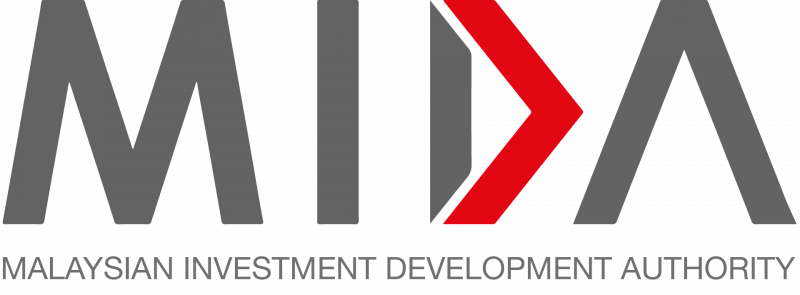AHTV is expected to attract investments worth RM32b over the next 10 years
THE Automotive High Technology Valley (AHTV) project, which is expected to begin this year, requires detailed planning and strong commitment from the relevant parties, including the local authority, Tanjong Malim District Council (MDTM), as the host.
The project, aimed at developing the national automotive city, is led by China’s automotive giant, Zhejiang Geely Holding Group Co Ltd, along with Malaysian diversified group, DRB-Hicom Bhd.
According to the Malaysian Investment Development Authority (MIDA), AHTV is expected to attract investments worth RM32 billion over the next 10 years, with this initiative projected to rejuvenate Malaysia’s automotive industry.
AHTV, which will be developed in Proton City, is set to emerge as a hub for high-tech automotive component research and development, and will propel Malay- sia to become a regional leader in the production of next-generation vehicles (NxGV).
Furthermore, according to MIDA, the project also includes the establishment of a research university that will help enhance the capabilities of Malaysia’s automotive sector workforce ensuring that Malaysia remains competitive in the global automotive market.
Preparations
Sharing his insights on the project with Bernama, MDTM president Mohd Ikram Ahmad said the town already has the necessary foundation to support the development of AHTV, provided through the implementation of the Muallim District Local Plan (RTD) 2035.
He said RTD Muallim 2035’s main vision, National Automotive Gateway and Youth-Friendly, forms the basis for MDTM’s planning and development governance. This is to ensure that the national-level policies and strategies can be realised based on four pillars: A competitive, dynamic and high-value economy; an inclusive and liveable living environment; a green corridor and sustainable ecosystem; and efficient and sustainable connectivity and infrastructure, he added. “There are 22 strategies and 130 actions identified for implementation in RTD Muallim 2035, involving three main sub-districts, namely Hulu Bernam Timur, Hulu Bernam Barat and Slim.
“The development concept is targeted at focus zones and potential urban development, conservation and preservation zones, as well as agropolitan zones,” he said.
He added that there are three main industrial focus areas under MDTM’s administration, namely Proton City Industrial Area, Kota Malim Prima Industrial Area and Bandar Behrang Industrial Area 2020.
Housing
Mohd Ikram said due to the rapid development and Muallim’s location bordering Selangor, there has been a sudden increase in population recently, creating a high demand for housing.
This, he added, is attributed to the gradual relocation of Proton Shah Alam factory workers to Tanjong Malim and the growing number of students at Universiti Pendidikan Sultan Idris (UPSI), which currently has around 25,000 students.
“This situation has triggered demand for housing. As such, many housing areas have been approved by MDTM, involving nearly 3,000 affordable housing units by 2025.
“Based on MDTM’s basic data, as of September 2023, a total of 13,143 housing units have been built in the Muallim district, in addition to 2,634 units under construction and 4,169 units approved,” he said.
Mohd Ikram said RTD Muallim 2035 has forecast the district’s population to be around 158,000 by 2035, with housing needs of about 33,000 units.
Similarly, several development projects are underway in the district, including the Jalan Maktab
Mixed Development Project, Bukit Wangsa Setia Housing in Behrang Sentral, Proton City Housing, Civil Servant Housing Project, Taman Wira Housing and Bandar Behrang 2020 Housing.
He said efforts to provide better facilities and infrastructure are also being undertaken to attract investors while ensuring residents’ comfort.
“This includes the provision of road facilities, telecommunications, water supply, electricity, and most importantly, gas pipelines, which are a crucial utility for the industrial sector.
“MTDM in collaboration with all parties will assist in driving development in the Muallim district, especially towards encouraging industry players to become more inclusive, in line with the nation’s aspiration to make Tanjong Malim a global automotive hub in the future,” he said.
Growth of the Commercial Sector
According to Mohd Ikram, the Muallim district is also witnessing growth in the commercial sector with the construction of a supermarket in Tanjong Malim and Behrang Sentral.
“Several proposals involving commercial development and a private hospital are still under discussion in the Mukim Hulu Bernam Timur area,” he added.
In this regard, the establishment of AHTV will further stimulate the growth of the district, which will benefit the locals, in particular.
As such, he said, the community also needs to be prepared to embrace change in tandem with the developments taking place from AHTV’s presence.
At the same time, he said AHTV would not succeed without the assistance and cooperation of all parties involved.
“This administration (MDTM) is always ready to realise the policies from the state and federal governments. MDTM aims to upgrade to municipal status (Tanjong Malim Municipal Council) within five years,” he said.
Not A Ghost Town
Dismissing the general notion that Tanjong Malim is a ghost town, that is, a sleepy town with few residents, Mohd Ikram said this is not true because the presence of UPSI (originally known as Sultan Idris Training College) since its inception in 1922, has attracted many students across the nation.
“Additionally, we have the Proton factory, which opened and began operations in Proton City, Tanjong Malim, in November 2003. Since then, the factory has generated substantial spin-offs in the surrounding areas, such as new housing schemes, commercial and industrial buildings, and recreational parks.
“There are many other factors that make Tanjong Malim a popular destination among visitors across the nation and abroad, including unique gastronomy like its famous pau, ecotourism as well as adventure activities like white water rafting and mountain climbing,” he said.
Source: Bernama
Meticulous planning completes Tg Malim as the national automotive city
Content Type:
Duration:


